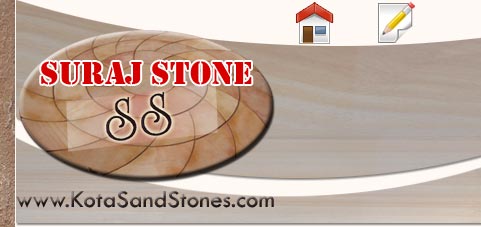
| Profile | Photo Gallery | Enquiry | Contact Us |

| |||||
| |||||
|
:: Sandstone :: || Sandstone || Sandstone Properties || Applications of Sandstone || Textures of Sandstone || Sizes of Sandstone ||
Sandstone is a sedimentary rock composed of small grains cemented by siliceous, felspathic, or calcareous cementing material. The most common cementing materials are silica and calcium carbonate, which are often derived either from dissolution or from alteration of the sand after it was buried. The environment where it is deposited is crucial in determining the characteristics of the resulting sandstone, which, in finer detail, include its grain size, sorting and composition and, in more general detail, include the rock geometry and sedimentary structures. It is an extremely hard and tough material and consists of consolidated masses of sand deposited by moving water or by wind. The durability of rock depends on the cementing material. Sandstone is often formed in layers and has varied applications as building stones. Sandstones are resistant to weathering, yet are easy to work. This makes sandstone a common building and paving material. Natural Sandstone is believed to be the youngest of the quartz-based stones, such that each stone has a different level of porosity, hardness and compressive strength. Its texture is noteworthy and the medium sized grains are all of the same size. Rock formations that are primarily composed of sandstone usually allow percolation of water and other fluids and are porous enough to store large quantities, making them valuable aquifers and petroleum reservoirs. Fine-grained aquifers, such as sandstones, are more apt to filter out pollutants from the surface than are rocks with cracks and crevices, such as limestone or other rocks fractured by seismic activity. Sandstone is suitable for both domestic and commercial use. It is highly acclaimed for its natural beauty, that makes it useful for interior as well as exterior decoration. Because of its architectural properties sandstone is used as a building stone, architectural aggregate, track & trail pathways, decorative landscape stone, decorative rip rap stone, and a source of economically valuable minerals. || Sandstone || Sandstone Properties || Applications of Sandstone || Textures of Sandstone || Sizes of Sandstone || |
| Site Developed, Hosted by JainaSoft Technologies |